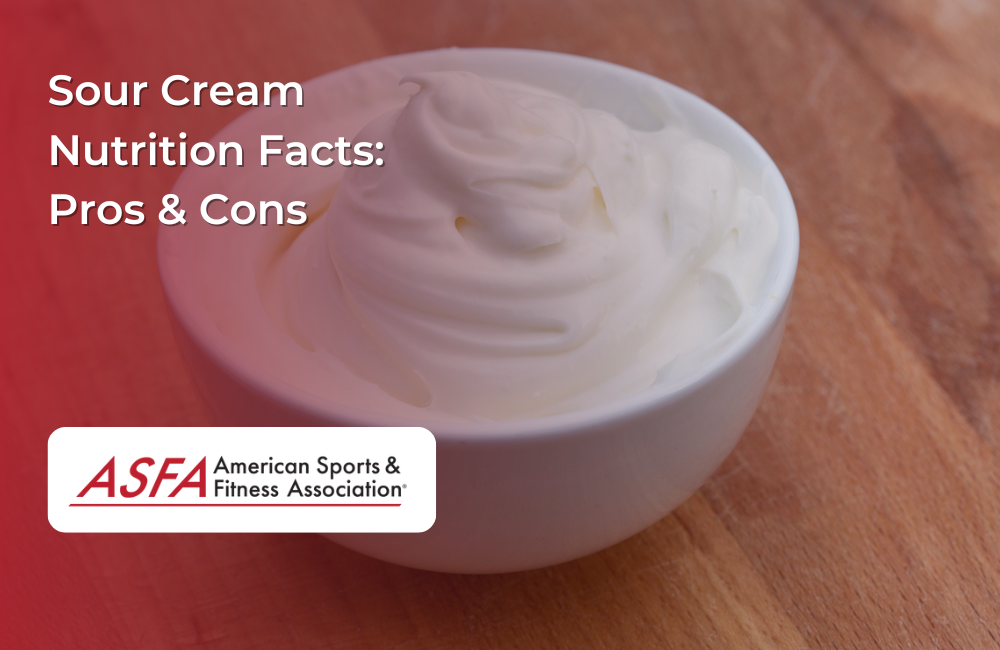Sour cream is a popular dairy product known for its rich texture and tangy flavor. It is often used as a topping, dip ingredient, or cooking addition to enhance the taste of various dishes. While it provides essential nutrients, its fat content and processing methods can impact its overall health benefits. Understanding its nutritional profile helps determine how it fits into a balanced diet.
Sour Cream Nutrition Facts: Pros and Cons of its Nutritional Profile
A two-tablespoon serving of regular sour cream contains approximately sixty calories, five to six grams of fat, one gram of protein, and one gram of carbohydrates, highlighting the sour cream nutrition facts. It is a good source of calcium and provides small amounts of vitamin A and phosphorus. Sour cream made from whole milk contains a mix of saturated and unsaturated fats, contributing to its creamy texture. Some varieties, such as low-fat or fat-free sour cream, have fewer calories and fat but may contain added thickeners or stabilizers to maintain consistency.
What is Sour Cream?
Sour cream is a delightful dairy product created by fermenting cream from cow’s milk with lactic acid bacteria. This fermentation process not only thickens the cream but also imparts a tangy, slightly sour taste that many people love. Sour cream’s creamy texture and unique flavor make it a popular ingredient in a variety of recipes. Whether you’re adding a dollop to baked potatoes, incorporating it into sauces and dips, or using it in baked goods, sour cream brings a rich, tangy element to your dishes.
Types of Sour Cream
There are several types of sour cream available, each catering to different dietary needs and preferences:
-
Regular Sour Cream: The most common type, made with pasteurized cream and lactic acid bacteria. It has a rich, creamy texture and is perfect for a wide range of culinary uses.
-
Low-Fat Sour Cream: This version has a lower fat content than regular sour cream, making it a lighter option for those looking to reduce their fat intake without sacrificing flavor.
-
Fat-Free Sour Cream: With almost no fat, this type is ideal for recipes where a very low-fat content is desired. It often contains added thickeners to maintain its consistency.
-
Organic Sour Cream: Made with organic cream and lactic acid bacteria, this type is preferred by those who prioritize organic and sustainable food options.
-
Probiotic Sour Cream: Contains live and active cultures of lactic acid bacteria, offering potential health benefits such as improved digestion and immune function.
Each type of sour cream has its unique characteristics, making it easy to find one that fits your dietary needs and culinary preferences.
Pros of Sour Cream
The benefits of sour cream include providing a source of calcium, which supports bone health and muscle function. It contains probiotics when made through traditional fermentation, which may contribute to gut health and digestion. The fat content in sour cream helps enhance the absorption of fat-soluble vitamins, such as vitamins A, D, E, and K. Its creamy texture and tangy flavor add depth to dishes, making it a versatile ingredient in both savory and sweet recipes. Sour cream is naturally low in carbohydrates, making it a suitable option for low-carb and ketogenic diets. When considering if sour cream is healthy, it's important to note that its fat content helps enhance the absorption of fat-soluble vitamins, such as vitamins A, D, E, and K.
Cons of Sour Cream
Regular sour cream is high in saturated fats, which, when consumed in excess, may contribute to higher cholesterol levels and heart health concerns. Sour cream, derived from fermented cream, can be a healthy addition in moderation, but overconsumption may lead to weight gain due to its high calories and saturated fat content. Some commercial sour cream varieties contain additives, preservatives, or artificial thickeners that may reduce its overall nutritional quality. While it provides some calcium and protein, sour cream is not a significant source of essential nutrients compared to other dairy products such as yogurt or cheese. Individuals with lactose intolerance may experience digestive discomfort when consuming sour cream, especially in larger amounts.
How to Make Sour Cream at Home
Making sour cream at home is a simple and rewarding process. Here’s a basic recipe to get you started:
Conclusion
Making homemade sour cream at home is a simple and rewarding process. Sour cream can be a flavorful and creamy addition to a balanced diet when consumed in moderation. It provides some beneficial nutrients and may support digestion when made with live cultures. However, its saturated fat content, potential additives, and limited nutritional value should be considered when incorporating it into meals. Choosing high-quality, minimally processed sour cream and balancing intake with nutrient-rich foods ensures that it remains a tasty yet health-conscious choice.
FAQs
Is sour cream healthier than mayonnaise?
Sour cream is lower in fat and calories than mayonnaise, but both should be consumed in moderation as part of a healthy diet.
Can people with lactose intolerance eat sour cream?
Some individuals with lactose intolerance may tolerate eating sour cream in small amounts, but lactose-free versions are available for those with sensitivities.
Is sour cream good for a low-carb diet?
Yes, sour cream is low in carbohydrates, making it suitable for low-carb and ketogenic diets.
Does sour cream contain lactic acid bacteria?
Traditional fermented sour cream may contain probiotics, but many commercial versions are pasteurized, which removes live bacteria.
What is the healthiest way to use sour cream?
Eating sour cream in moderation as a topping for nutrient-rich meals or choosing a lower-fat version can help balance its benefits and drawbacks.





